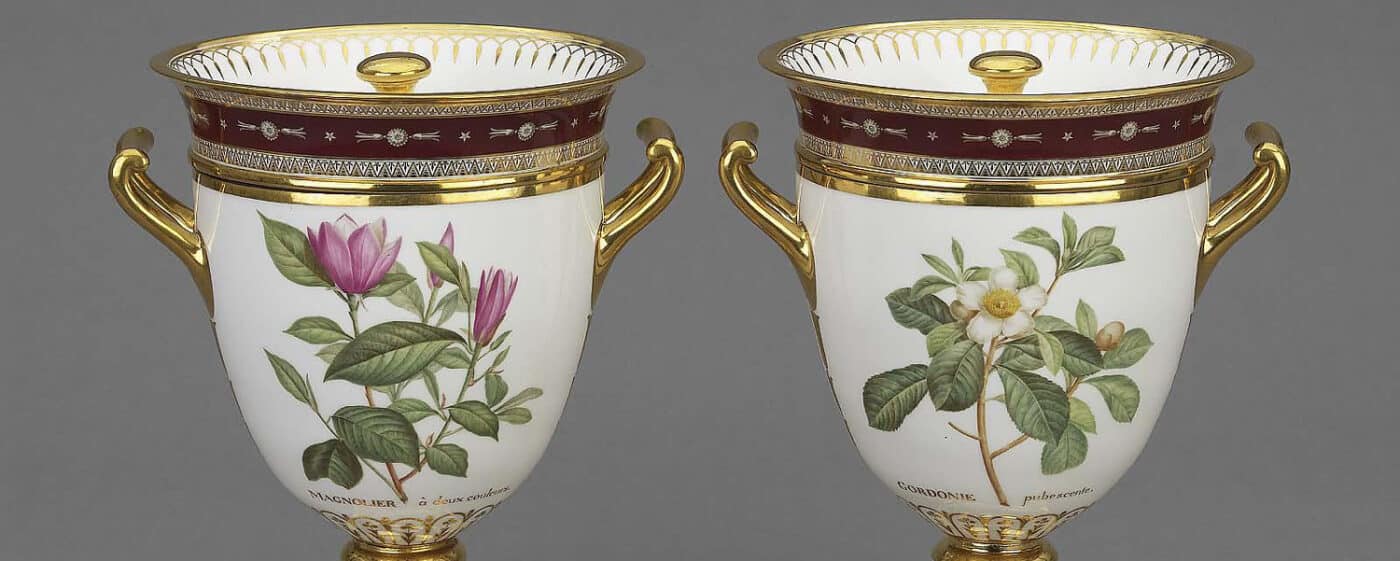Botanical Art
The Interrelation between Natural History Art and Porcelain Ornamentation
The decorative use of Redouté’s botanical illustrations on Sèvres porcelain.
In addition to serving aesthetic and educational purposes, the natural history prints of the 19th century were often used as stock imagery in various creative industries. As a result, an artist’s iconography could often be found replicated on porcelain platters, embroidered tablecloths, and carved furniture. Such is the case for the art of Pierre-Joseph Redouté whose flower prints depicting the contents of the royal gardens wove their way into the stock repertoire of the preeminent Sèvres porcelain manufacturer. Numerous vases, plates, and cups are graced with his delicate flowers. In this way, his botanical imagery experienced a rebirth as utilitarian objects and bridged the gap between the decorative and functional domains.
With the development of international trade relations in the 18th century, an influx of novel objects, materials, and production methods were introduced to Europe. In France, the alluring Chinese porcelain met a welcoming audience. However, by the late 18th to early 19th century, there was a drive to produce and replicate these imported objects locally which resulted in the establishment of the Sèvres porcelain factory which swiftly gained international renown as the foremost porcelain manufacturer in Europe. Particularly under Napoleonic rule, objects d’ art were seen as symbols of the nation’s self-sufficiency, pride, and imperial influence. As a result, a great deal of the art produced during this time bears both overt and subliminal intonations upholding the projected status of the Empire.
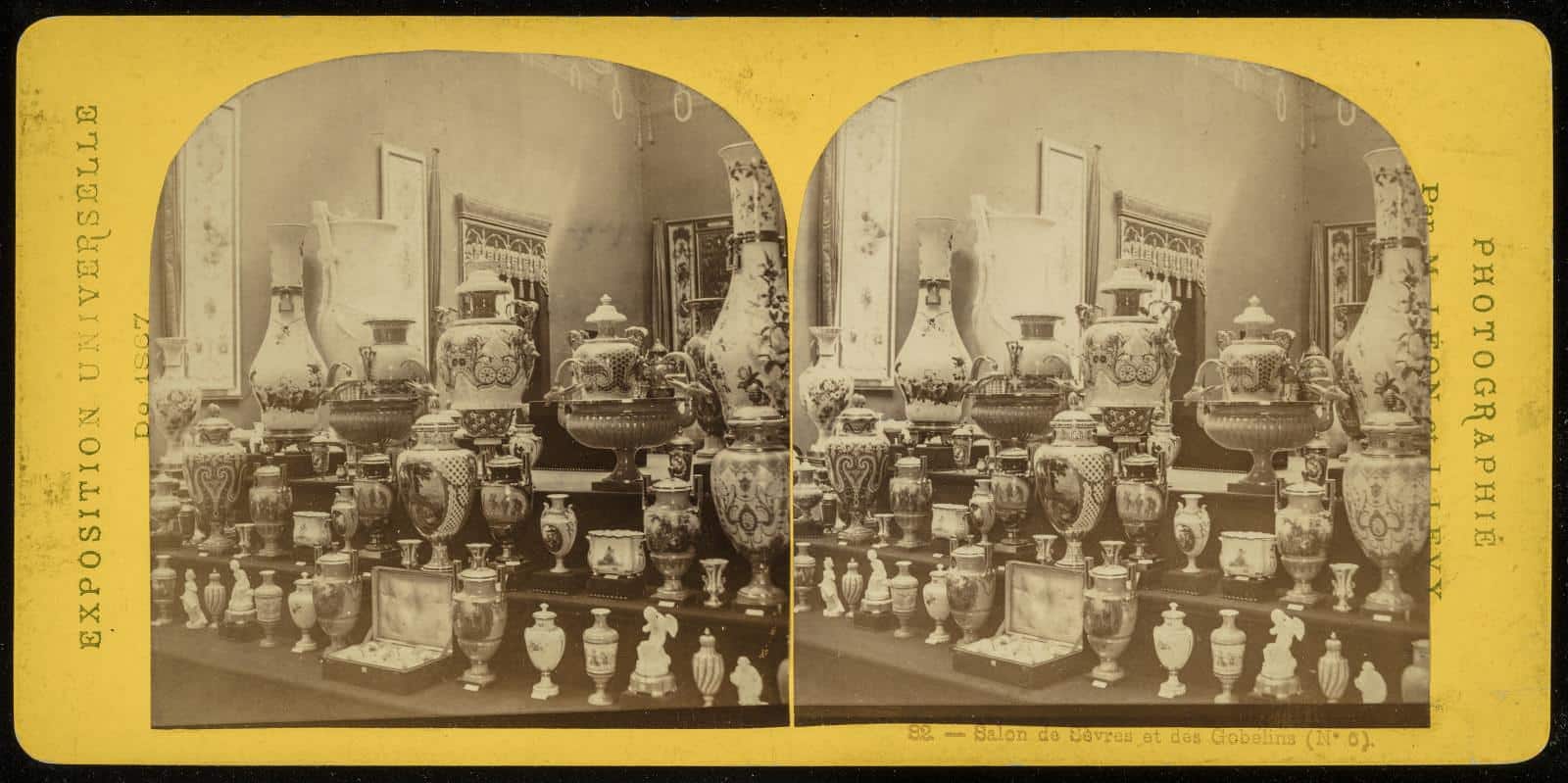
Salon de Sèvres et des Gobelins (No. 6), by Léon et Lévy, 1867
Stereocard, albumen prints mounted to card stock
The Sèvres manufacturer is no exception and their porcelain is frequently adorned with neoclassical cartouches purporting strong themes of victory, heraldic imagery, and designs that bolster national pride. In fact, kaolin, the mineral necessary for Chinese-style hard-paste porcelain, was sourced locally which became a point of pride for the French and enabled their upwards trajectory to become one of the most notable factories in Europe.
When describing the varied stylistic features of Sèvres porcelain, Jeffrey Munger, in his article “Sèvres Porcelain in the Nineteenth Century,” suggests that “Perhaps the only thread that can be said to run through much Sèvres production of the nineteenth century is the proclivity to borrow freely from various historical styles and then to either reinterpret these styles or combine them in unprecedented ways.” As a result, the porcelain features a great deal of imagery and ornament borrowed from historic artists such as Titian, Poussin, and Redouté. By replicating Redouté’s flowers on porcelain, the Sèvres factory reinforced the scientific interests and discoveries of the day and brought the natural world and scientific discovery into the domestic sphere.
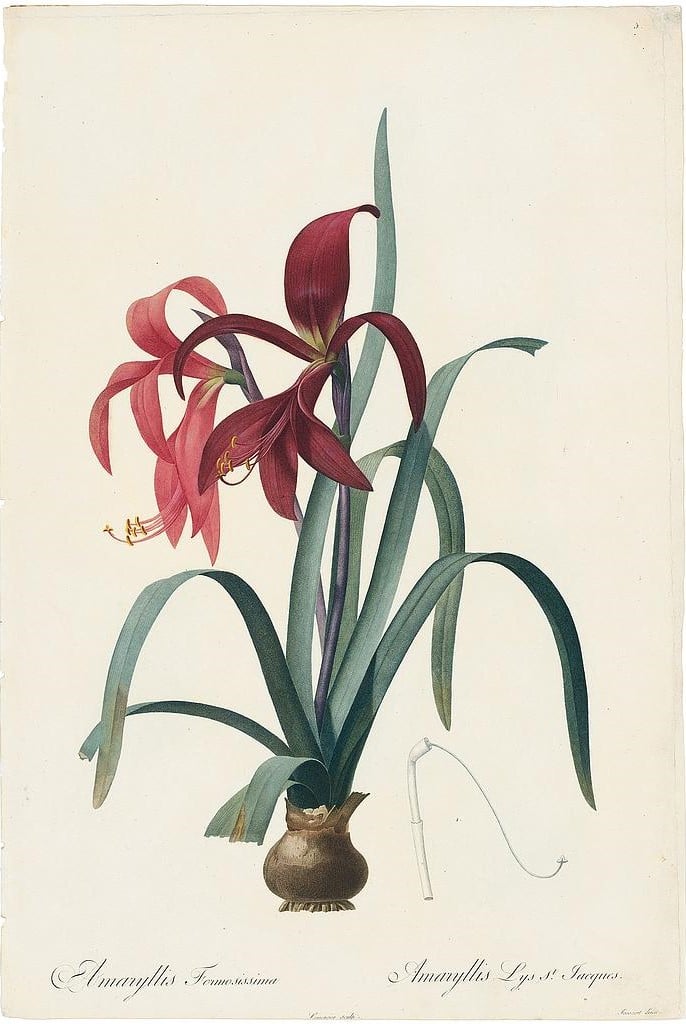
Redouté Lilies Pl. 5, Jacobean Amaryllis
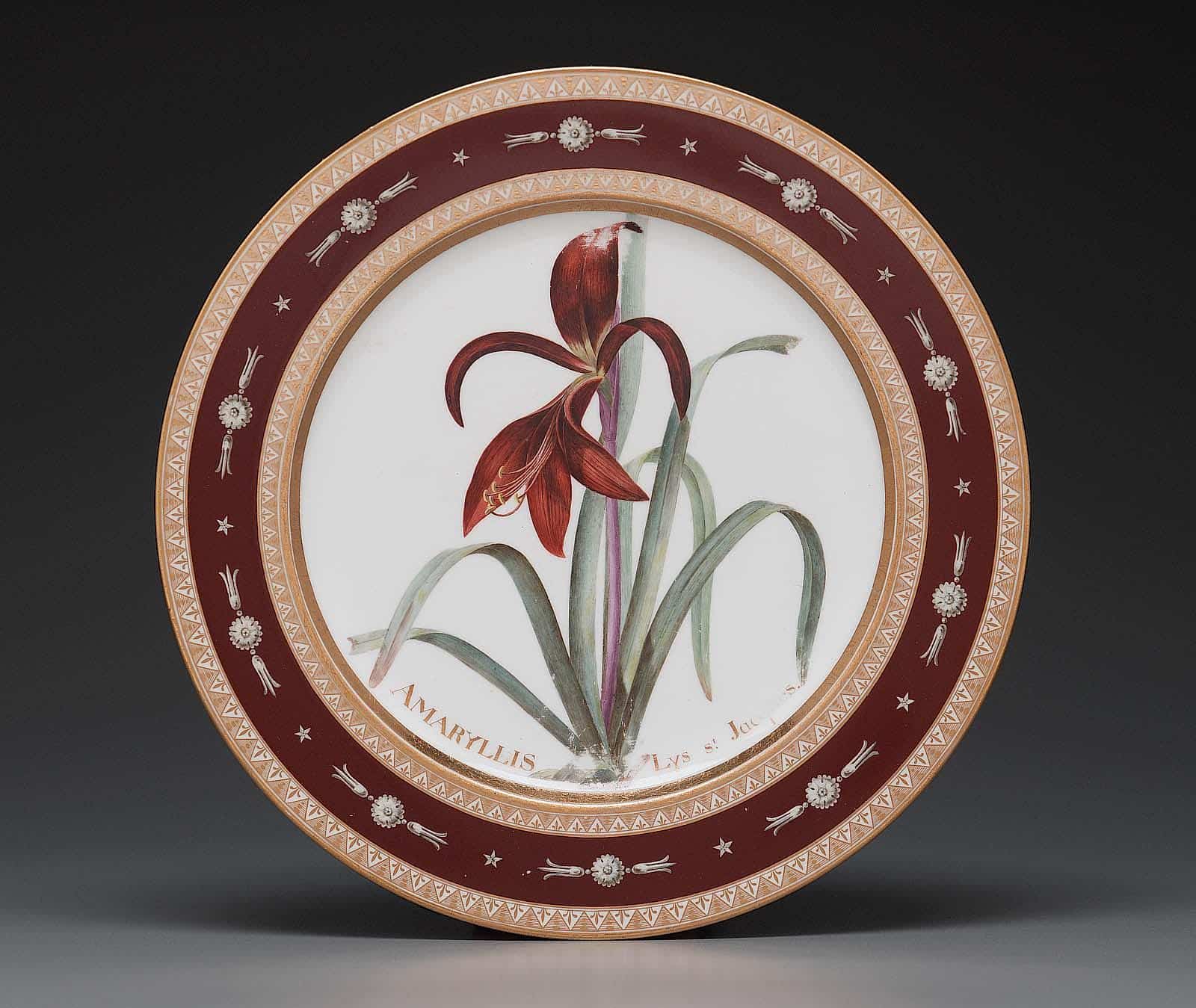
Sèvres plate from Service des plantes de la Malmaison
Museum of Fine Arts Boston
Take for instance Redouté’s Les Lilacées Pl. 5, Jacobean Amaryllis which was replicated on this hard-paste porcelain plate with colored enamel and gilded decoration. The plate comes from a 116-piece collection titled the Service des plantes de la Malmaison that was gifted by Empress Josephine to her relative Stéphanie de Beauharnais. Here we can see that the Sèvres painters remained faithful to Redouté’s original design only simplifying the composition slightly in order to accommodate the reduced dimensions of the plate. This duplication practice was commonplace and anticipated by Redouté who stated that his folio “offers charming and valuable models to manufacturers who take advantage of it to enrich their wares, to principals of institutions interested in promoting the progress of their pupils in the art of design, and even to teachers dedicated to instruction in flower painting.” (Introduction to Choix des plus belles Fleurs, 20).
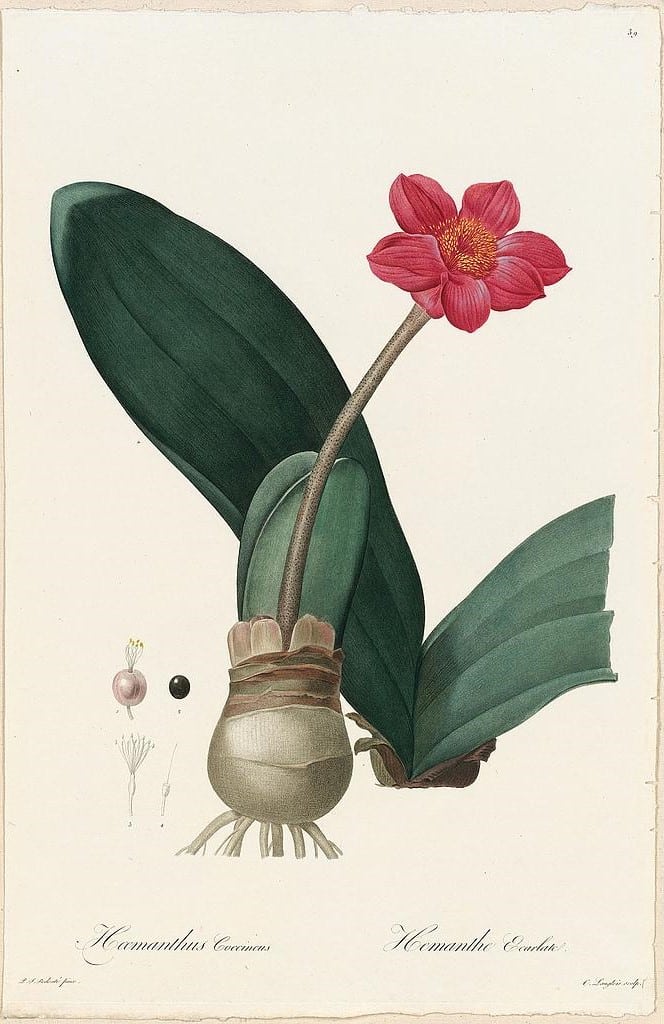
Redouté Lilies Pl. 39, Scarlet or Blood Haemanthus
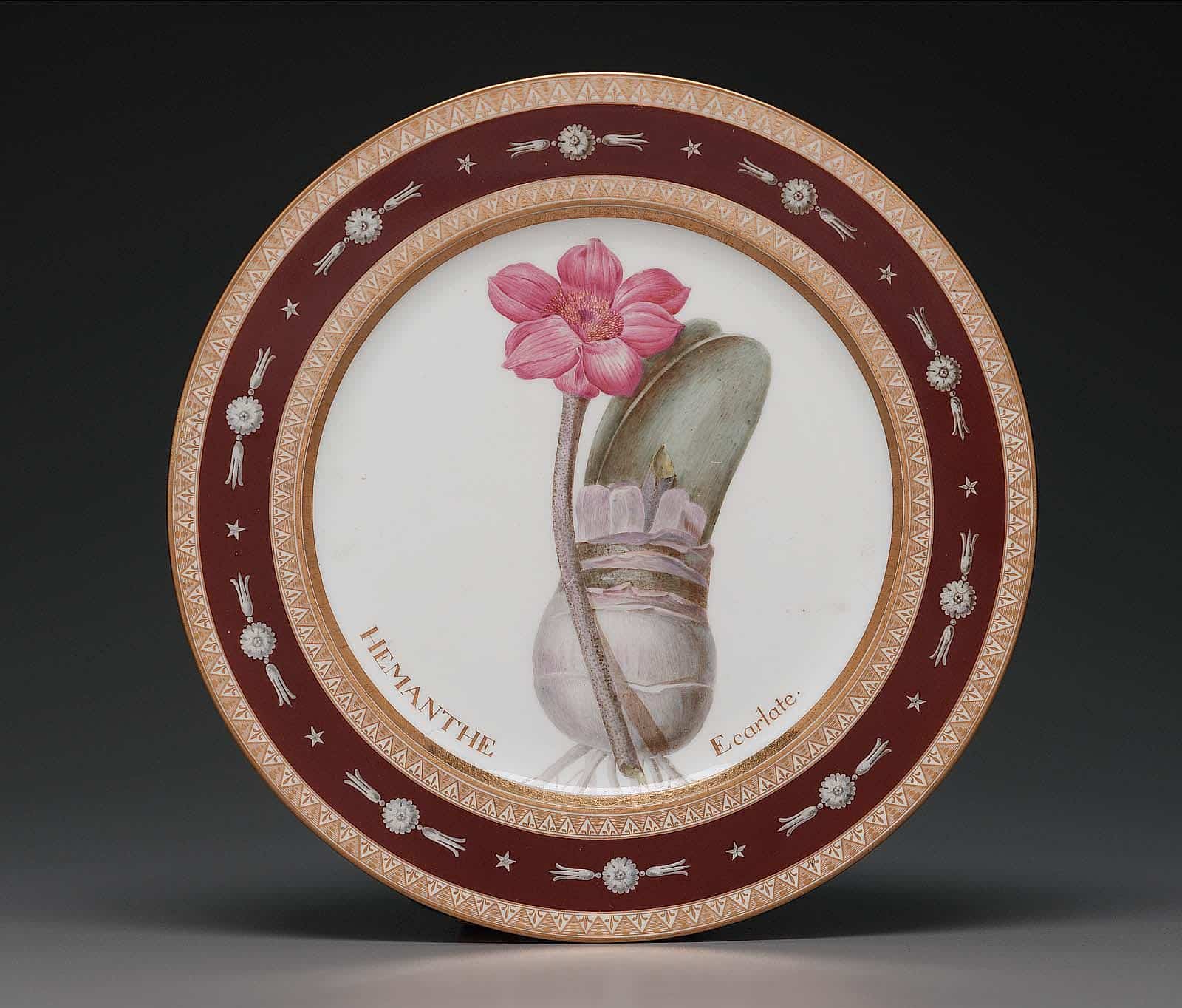
Sèvres plate from Service des plantes de la Malmaison
Museum of Fine Arts Boston
Likewise in Redouté’s Lilies Pl. 39, Scarlet or Blood Haemanthus the floral imagery has received a similar translation onto a porcelain plate from the same set. In this instance, the Sèvres artist has severed the haemanthus flower from its stalk and repositioned it closer to its bulbous root. As a result, the imagery lends itself to the circular orientation of the plate while retaining identifiable roots with the original artwork.
From the consumer perspective, owning a botanically decorated porcelain set had the potential to advance the possessor’s reputation in a number of ways. To begin with, the botanically adorned porcelain subtly introduced Enlightenment themes of natural science and discovery to the table. This association would, in turn, work to bolster the impression of the host’s learnedness and serve as more pragmatic conversation starters.
Likewise, Redouté’s floral imagery came from the royal gardens and therefore engendered an aura of wealth, nobility, and sophistication that reflected well on the owner. Moreover, the vast range of botanicals depicted speaks to the far reach and influence of the Napoleonic Empire and to the local industry that was able to master foreign techniques in order to produce the fine wares. As a result, the porcelain sets act as a subtle testament to the prestige of the host and the French Nation itself.
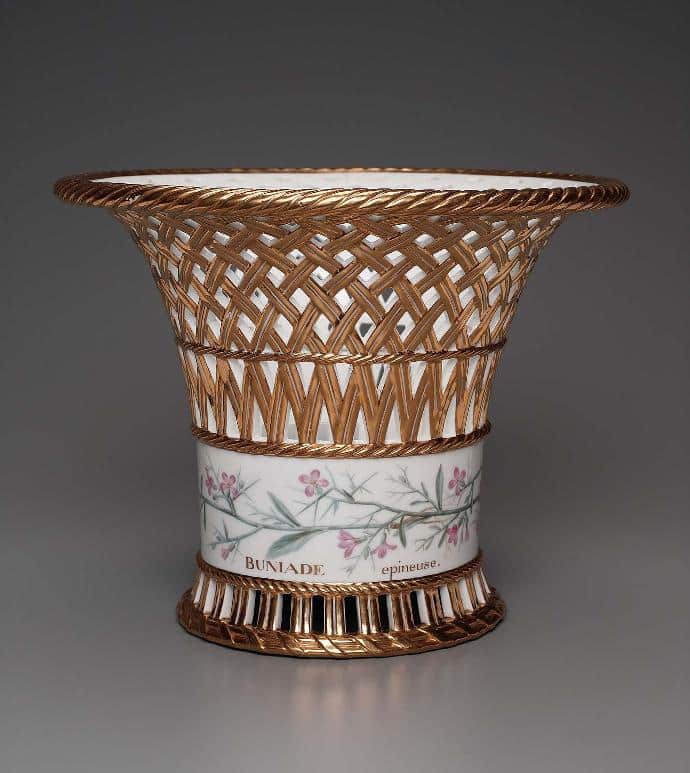
Vase from Service des plantes de la Malmaison with decoration designed by Pierre- Joseph Redouté
Museum of Fine Arts Boston
In her Master’s thesis, Sara O’Keefe explains how “Royalty…regarded for their Enlightened philosophy, commissioned porcelain services based on botanical journals compiled by highly regarded natural scientists to further demonstrate their intelligence, celebrate their countries’ beauty and to encourage scientific comprehension among their courts.” (“Science on the Table: A Botanical Approach to Floral Decoration on Porcelain in the Second Half of the Eighteenth Century,” 2014, 8).
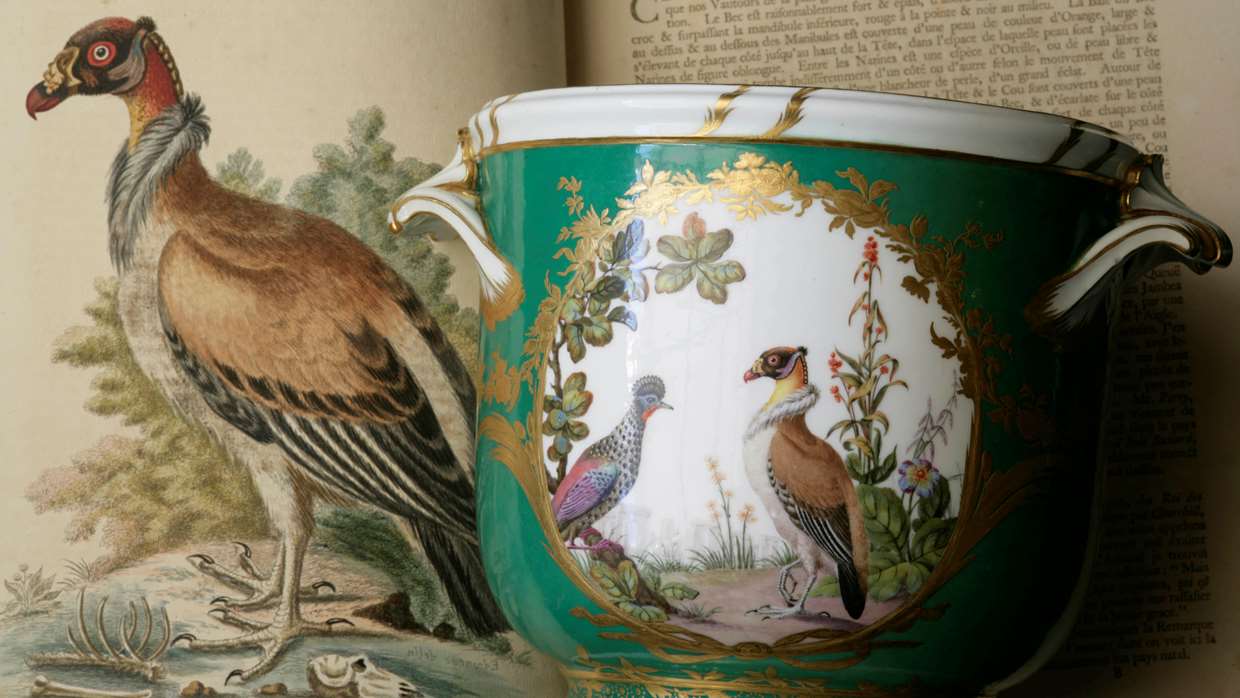
Sèvres wine cooler decorated with George Edward’s ‘The King of the Vultures’
Goodwood House Collection
Redouté’s imagery is not unique, however, in its adaption as ornamental motifs in other industries. A similar translation can be found in the ornithological paintings of George Edwards, pictured above, and Jacques Barraband which were also used to embellish Sèvres porcelain. In conclusion, the use of natural history art as decoration on functional wares worked to disseminate scientific interests into the domestic sphere, represent the host’s intelligence, and reflect well on the nation as a whole that produced this beautiful marriage of art, science, and industry.

